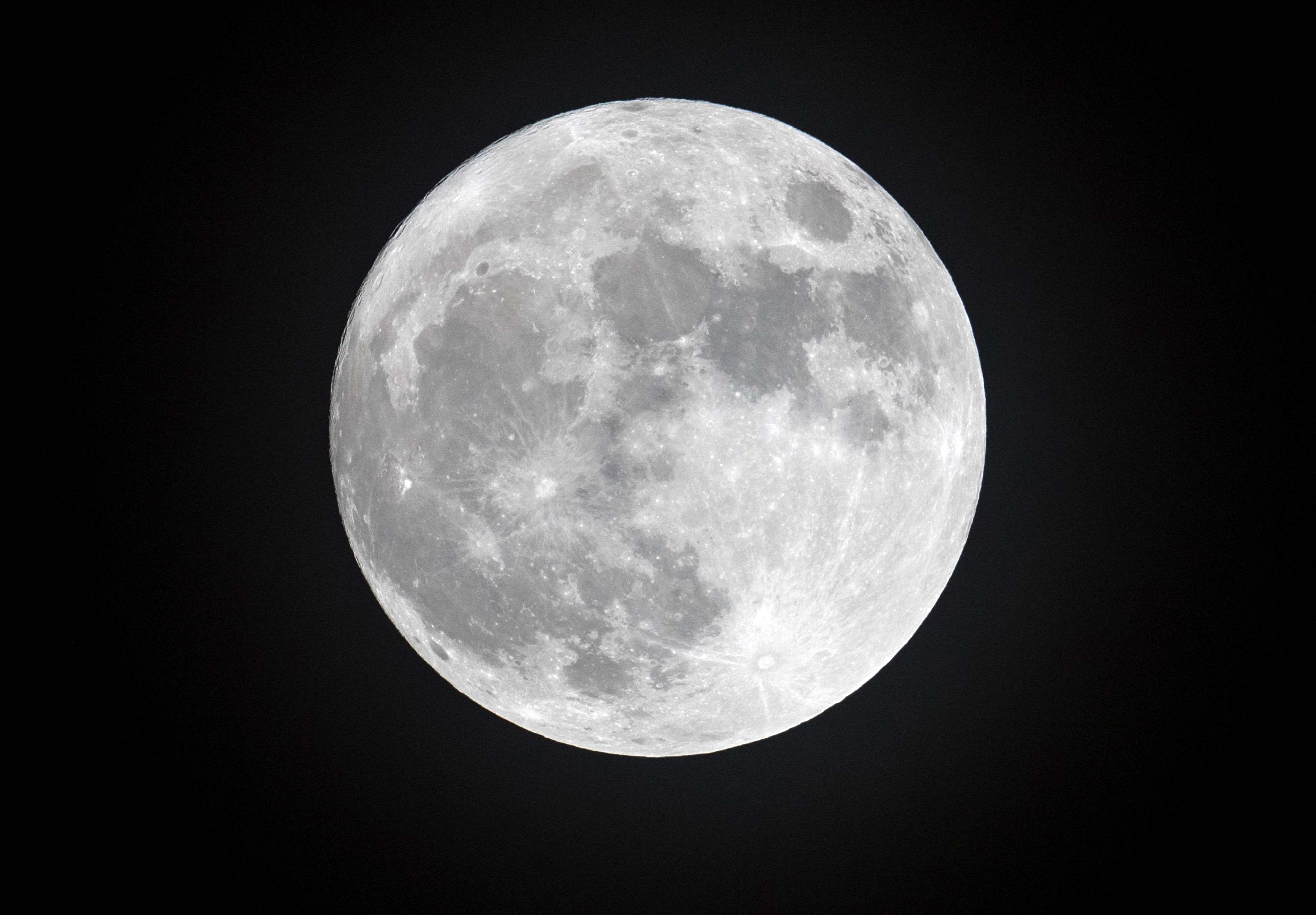What is patently obvious often dulls the need to ask why it is so, like why we only ever see half a moon, whatever its phase. But just why it spins exactly once every earth day with respect to the Sun is worthy of question.
We know it causes the oceans to bulge, forcing changes in sea level and always offers us half its face. English poet Stevie Tate sketches the issue rather well:
The jealous moon so tries to steal
Our oceans from their sleep
In cohorts with the Sun
In tides, the water it does reap
It shows us always that same face
A twirl timed to perfection
The dark side made to shy away
and ne’er holds lights reflection
The Moon takes 27.3 days to complete one rotation on its axis, which is exactly the same amount of time it takes to orbit Earth, give or take a wobble or two.
This is called synchronous rotation, which means that as the Moon revolves around Earth, it rotates just once, keeping a single hemisphere permanently facing our planet.
It wasn’t always so.
What slowed our once-spinning Moon to a virtual stop?
Once upon a time
The most prevalent gestation theory is that the moon was born in fire when a Mars-sized object struck the Earth. This re-melted the planet and threw enough stuff into space for it to coalesce into a space ball tied to its parent by gravity.
It’s probable that the newly minted Moon was spinning on its own axis. There are other theories – a wandering asteroid captured by Earth’s gravity maybe – but a big wham is the most likely.
 The Moon is not a perfect sphere, but due to the Earth's gravitational pull is ever so slightly egg-shaped (exaggerated for effect in this image). (Image: Supplied)
The Moon is not a perfect sphere, but due to the Earth's gravitational pull is ever so slightly egg-shaped (exaggerated for effect in this image). (Image: Supplied)
As the Earth re-cooled from rock melt to something more agreeable the oceans appeared (comets bearing water?). It was also spinning: any body formed from gas and debris in space rotates (don’t ask, it just does). The Earth is still doing that simply because frictional forces in space are too small to make it stop.
Read more: Exploring the super blue moon — what is it and why is the phenomenon so special?
But what about the Moon? Here’s a reason astronomers offer about what put on the brakes.
As the moon passes overhead, its gravitational attraction bulges both the waters and, to a lesser extent, the Earth itself. But Earth’s gravity also acts on the moon. These tidal bulges – called tidal locking – don’t lie directly below the moon, but lag some way behind it as the Earth rotates. Gravity in the raised mass below the Moon pulls on it and the lag causes this pull to be at an angle. Over vast aeons of time this is thought to have gradually slowed its rotation.
A further reason is because Earth has a much higher gravitational tug than the moon, which forces the Moon’s surface to flex. This causes friction, generating heat and rotational drag, further slowing its rotation.
Why does it show us the same face? Here’s the theory. Its denser core – and therefore its centre of gravity – is not central and there are certain off-centre areas within it (called mascons) of increased density that respond at a higher level to Earth’s pull. The crust on the near side is also thinner. It is thought that this lopsided situation plus the pull of Earth’s tides gradually stopped the spin, like a weight on a wheel controlling its final rest position.
The Goldilocks Zone
All this is very fortunate. It’s said that life on Earth exists in a “Goldilocks Zone”: not too much, not too little but just right. We are here by a good deal of luck: If Earth’s average temperature had been just a few degrees higher or lower, it could have prevented the formation of liquid water.
A prolonged ice age or a runaway greenhouse effect could have made the planet too cold or too hot for life.
A slight increase in carbon dioxide could also have led to a greenhouse effect, while a decrease could have caused “snowball Earth”.
Variations in the Sun’s output could have had drastic effects. Turns out it was just right.
Earth’s magnetic field protects us from harmful solar and cosmic radiation. A weaker magnetic field could have allowed more radiation, potentially stripping away the atmosphere and making the planet uninhabitable.
Extreme seasonal variations
Changes in Earth’s orbit or axial tilt could have led to extreme seasonal variations. Such instability could have made it difficult for life to adapt and survive.
A decrease in rotation speed would probably have resulted in the Moon moving away from the Earth at an increased rate (it is presently moving away at 3.78cm a year). This could have affected the tides and therefore the movement of life from the sea to land.
All this made life in general possible.
But us? Oxygen is largely created by life forms. Without them there would be no us.
Here’s another result of the gravitational dance between the Earth and the Moon.
The Earth’s pull on just the side of the moon that faces us has, over billions of years, caused the Moon to distort. It’s ever so slightly egg-shaped. DM




 Egg moon (Photograph: Supplied)
Egg moon (Photograph: Supplied) 